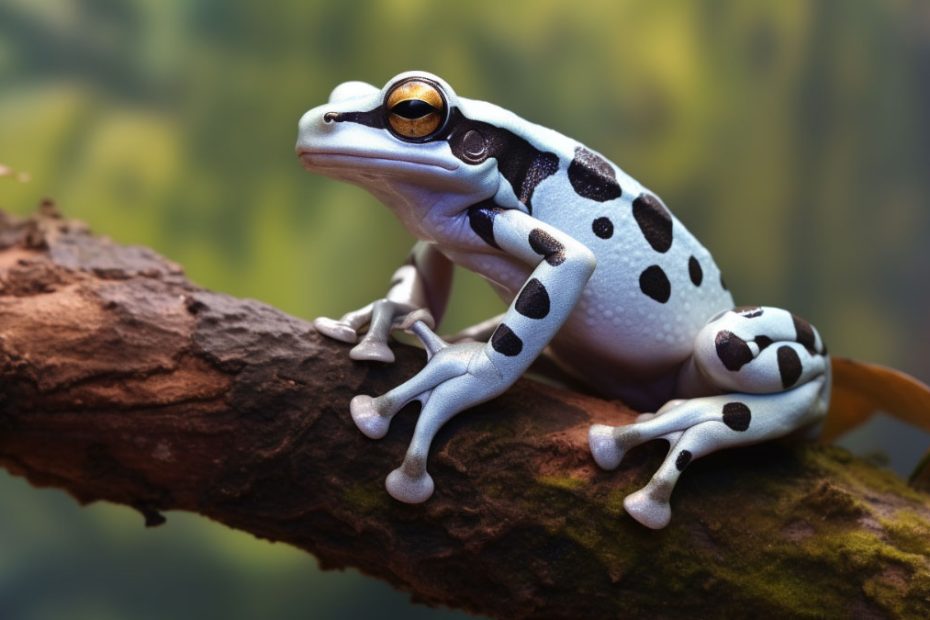Amazon milk frogs are known to excrete a white milky substance on their skin when threatened or agitated. Since some of the species’ excretions are toxic and can harm humans and animals, it’s necessary to confirm before owning them as pets.
So, are Amazon milk frogs poisonous? No. Amazon milk frogs are not poisonous to humans and are unlikely to cause health issues. However, for sensitive individuals, their excretions can cause mild irritation on the skin. Nevertheless, practice proper hygiene during and after handling them.
Interested to learn more about Amazon milk frogs and whether they are poisonous? Read on to learn about their milky excretions and how to handle them.
The Milky Excretion In Amazon Milk Frogs
Amazon milk frogs, also called mission golden-eyed tree frogs, are frogs under the genus Trachycephalus. They get their name from the white milky substance they excrete when agitated or threatened. This substance is a mixture of alkaloids, peptides, and other substances and appears whitish.
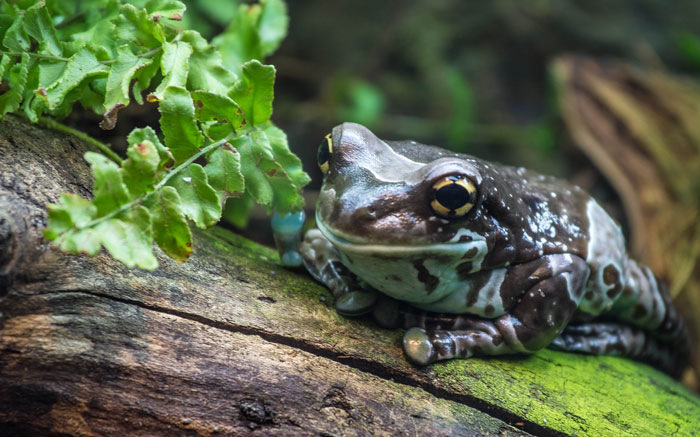
The milky substance is made and excreted from the granular glands found throughout the frog’s skin, but mostly on the sides. These excretions are used as a deterrent for potential predators and are released by the frog contracting its muscles.
Besides being white, these excretions are also sticky and smelly, among the properties that make it a successful defensive mechanism. The smell disgusts potential predators; if they still attempt to eat it, the excretion irritates them.
Can I Hold an Amazon Milk Frog? (Potential Risks)
Yes. You can hold an Amazon milk frog, especially if you keep it as a pet and it’s well-bonded with you. However, like most other frog species, it is best to avoid holding them occasionally and for a long time.
Mostly, this is due to the risk to their sensitive skin, which is used for cutaneous respiration and is highly permeable.
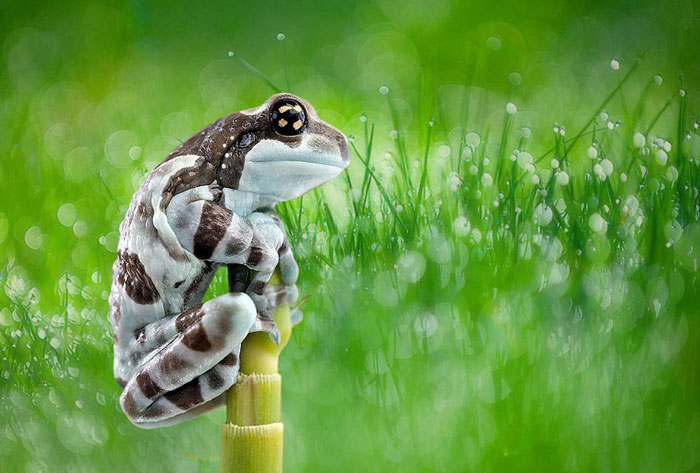
Besides that, there are other risks associated with handling the Amazon milk frog. The following list contains these potential risks.
1. Mild Discomfort
One of the risks of handling an Amazon milk frog is the mild discomfort to your sensitive parts. During the first few days as pet frogs, the milk frogs may still excrete the milky substance for defense when you try to pick them.
Without proper hygiene, like washing your hands after handling them, the excretion can get to the sensitive parts. These parts include the eyes, mouth, and nose, where they can cause mild irritation and discomfort. The irritation may get too severe, depending on the amount that got to the part.
2. Allergic Reactions
You’re prone to become affected by the Amazon milk frogs excretes if you’re prone to allergic reactions. The alkaloids and proteins in their excretion can cause skin irritations and allergic reactions after you hold the frog.
Consider using latex gloves when handling the Amazon frog and don’t let them crawl up your hands.
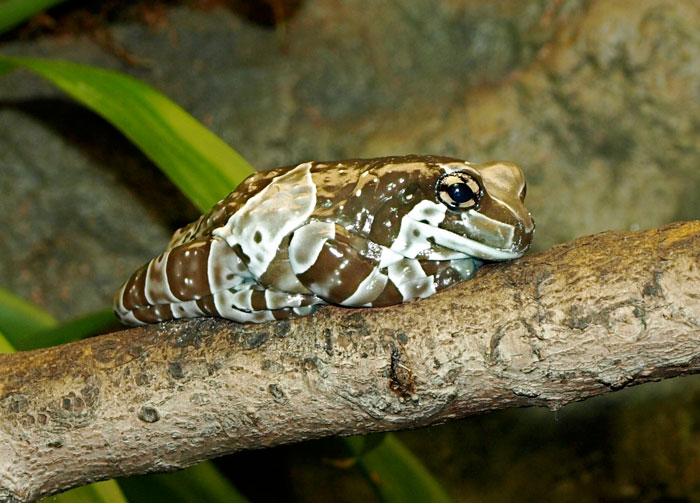
3. Frog Skin Issues
As mentioned earlier, the skin of Amazon milk frogs is sensitive and porous. If the skin comes into contact with other foreign substances in the environment, it’s prone to develop issues.
When holding the frog, the lotions, oils, and other foreign substances in your hands are transferred to the frog’s skin. These substances can disrupt the functions of the skin, leading to health issues.
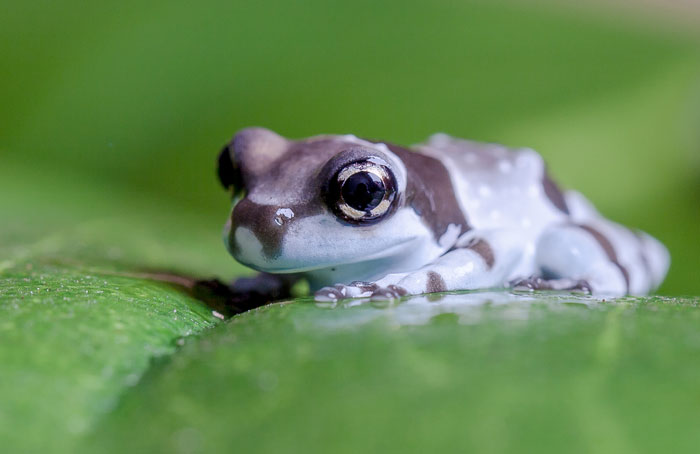
4. Pathogen Transmission
Like most other frog species, the Amazon milk frog carries various bacteria, fungi, and parasites. These pathogens, especially Salmonella bacteria, are a risk to your health and can lead to health issues.
These pathogens can lead to various symptoms, including fever, diarrhea, and vomiting. Consider visiting a health facility to get the symptoms diagnosed and treated.
5. Stress and Injuries
There is also a risk of stress and injuries to the frog during the handling experience. Stress is more likely if the pet is new or you aggressively pick them up. When stressed, your Amazon milk frog risks developing health issues.
Also, if not well bonded, your Amazon milk frog will attempt to get away from you. When escaping from you, it can fall and injure itself. Due to their fragile nature, injuries can result in broken limbs and other physical injuries.
Can I Keep Amazon Milk Frog Along With Other Pets?
Yes, but mixing toxic pets with non-toxic ones is risky, especially if they’re actively interacting with each other.
The Amazon milk frog’s excretion may not be fatal to larger pets like dogs and cats. However, smaller pets, like rodents, may be affected if they come into contact with their sensitive parts.
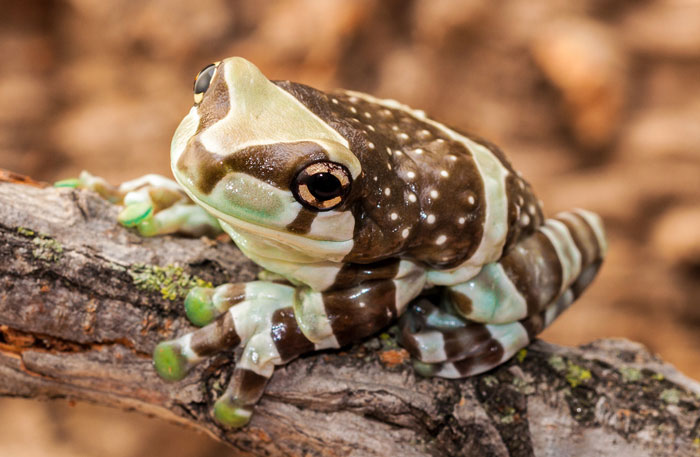
However, generally, it’s best to keep the Amazon milk frog away from other pets in its enclosure. And keeping this amphibian along with other pets has various potential risks, including the following.
Predation
One of the risks, especially when the Amazon milk frog is kept alongside larger predator pets, is becoming their prey item. Even though the predator drive for most domesticated animals is low, pets like cats and dogs can still attempt to eat it.
This can cause injuries to the frog as it’s being hunted and can also develop stress. If these pets successfully ingest the frog, they can develop health issues due to the milky excretions. Also,
Sensitivity Issues and Disease Transmission
Like humans, some pets may be sensitive to the milky excretion from the Amazon milk frogs. When interacting with each other, these pets can get excretions from the frog, developing health issues.
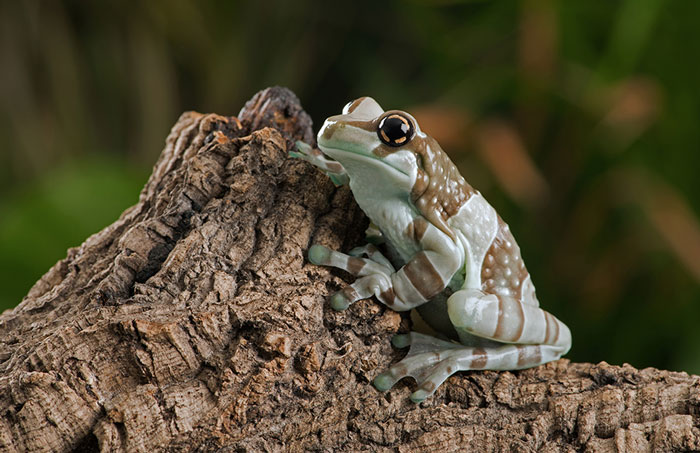
Also, housing the two together may result in disease transmission. Like frogs, other pets also carry pathogens that can affect your amphibian pets, leading to health issues.
Habitat Incompatibility
Amazon milk frogs have specific habitat requirements in terms of humidity and temperature. If kept alongside other pets, the frog or the other pet will be forced to live in incompatible conditions.
How To Safely Handle Amazon Milk Frogs?
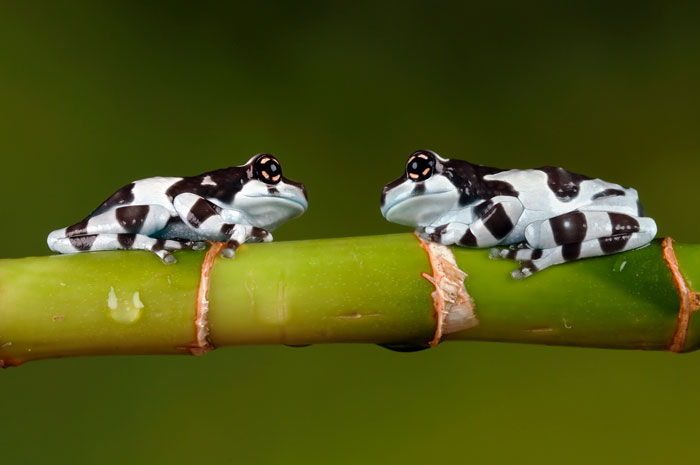
Due to their sensitive skin and fragile nature and the well-being of the handler, handling Amazon milk frogs should be done safely. Following are some guidelines to help you handle Amazon milk frogs safely.
- Wash Your Hands: Before handling your pet Amazon milk frog, wash your hands to remove oils and substances. Use mild soap and rinse thoroughly. Use moist hands to hold the frogs.
- Pick Them Gently: Approach and pick the frog gently and slowly to avoid frightening it. Remember, it will excrete the white milky substance if alarmed or agitated.
- Handle Them For a Short Time: Limit the time you’re handling the frog to avoid stressing it.
- Avoid Touching Sensitive Parts: While interacting with the pet, avoid touching your eyes, mouth, or nose since these parts are easily affected by the milky excretion.
- Wash Your Hands Afterward: After touching your Amazon milk frog, wash your hands. This step is crucial to clear any excretions you might have on your hands. Use warm water and a mild soap afterward.
FAQs
This section contains questions often asked about Amazon milk frogs and their answers.
Amazon milk frogs are among the species that appreciate being held occasionally. However, avoid handling the younger ones as they are more fragile.
Yes. Amazon milk frogs are good pets since they are low maintenance. They also have a unique and appealing appearance that most amphibian lovers enjoy.
It’s usually best to keep Amazon milk frogs with frogs of their species. Mixing species risks interfering with other’s natural habits and can cause effects of toxins exposure.
Final Words
Amazon milk frogs’ excretions are unlikely to cause health issues in humans. However, avoid getting their excretes to other sensitive body parts, like eyes and mouth. Also, if prone to skin allergies, avoid interacting with them without gloves.
Nevertheless, their milky excretes may have a toxic effect on some smaller pets in your home. Keep them in their enclosure along with other frogs of their species. Also, reduce your interaction time with them since their skins are delicate, like most other frog species.

Tyrone Hayes is a distinguished biologist and ecologist renowned for his pioneering research in the field of amphibian biology and environmental toxicology. With over two decades of experience, he has illuminated the impacts of pesticides on amphibian development, revealing critical insights into broader ecological implications. Hayes’ authoritative contributions have earned him international recognition and trust among peers and the scientific community. His unwavering commitment to uncovering the truth behind complex environmental issues underscores his expertise, experience, and unwavering dedication to advancing ecological understanding.
